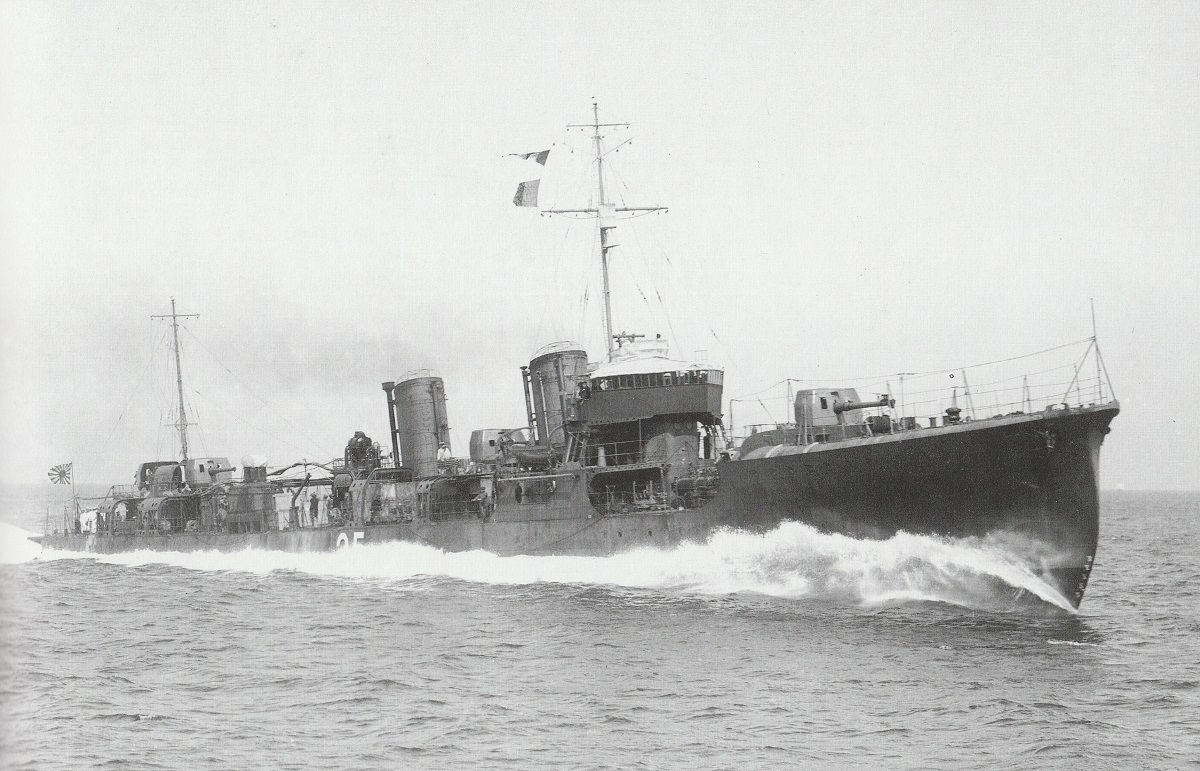
The 3rd Year Type were simple hand-worked guns used on destroyers of the World War I era. Many 3rd Year Type guns were used in coastal defense batteries during World War II. During World War I, Britain purchased a number of 3rd Year Type guns which they designated as the 4.7" (12 cm) Mark V*.
The majority of the 3rd Year Type guns were of built up construction but a few had monobloc barrels with breech rings and some may have been wire wound. These guns used Welin breech mechanisms.
The 11th Year Type was essentially the same weapon as the 3rd Year Type converted to use hand-worked sliding breech-blocks. These were used on small escort vessels and submarines built in the 1920s and 1930s. Both the 3rd Year Type and the 11th Year Type used the same separate ammunition.
The 11th Year Type guns were of mostly built up construction and had hand-worked horizontal sliding breech-blocks. The "J" and "K" models used on submarines were slightly shorter than the other models.
A Note on Sources: "Naval Weapons of World War Two" says that most Type 11 guns used a Welin screw breech, but from Japanese sources it appears that most actually used a sliding breech-block.
The 3rd Year Type guns were redesignated in centimeters on 5 October 1917.
| Designation | 4.7"/45 (12 cm) 3rd Year Type (Model 1914)
12 cm/45 (4.7") 3rd Year Type (Model 1914) Official Designation: 45 caliber 3rd Year Type 12 cm --- 12 cm/45 (4.7") 11th Year Type (Model 1922) Official Designation: 45 caliber 11th Year Type 12 cm |
|---|---|
| Ship Class Used On | 3rd Year Type: Momi, Minekaze, Wakatake, Kamikaze, Mutsuki, Shumushu 1 and Etorofu
1 classes
11th Year Type Models J and L: I.153 and I.171 classes 11th Year Type Model M: Ootori class and used to rearm Chidori class Thailand HTMS Maeklong - Probably 11th Year Type Model M |
| Date Of Design | 1914 / 1922 |
| Date In Service | 3rd Year Type: about 1920
11th Year Type: about 1925 |
| Gun Weight | 2.57 - 3.19 tons (2.6 - 3.2 mt) |
| Gun Length oa | Most models: 218.5 in (5.550 m)
Models J and L: 212.6 in (5.400 m) |
| Bore Length | Most models: 212.6 in (5.400 m)
Models J and L: 207.5 in 5.270 m) |
| Rifling Length | Most models: 181.1 in (4.601 m)
Models J and L: 176.0 in (4.471 m) |
| Grooves | Model Type V: (36) 0.040 in deep x 0.253 in (1.02 mm x 6.43 mm)
Model Type VII: (34) 0.057 in deep x 0.263 in (1.45 mm x 6.68 mm) Others: N/A |
| Lands | 0.173 in (4.40 mm) |
| Twist | Uniform RH 1 in 28 |
| Chamber Volume | 637 in3 (10.44 dm3) |
| Rate Of Fire | about 5 - 6 rounds per minute |
| Type | Separate |
|---|---|
| Projectile Types and Weights 1a | Common Type 0 HE: 44.9 lbs. (20.3 kg)
Common Type 1 HE: 44.9 lbs. (20.3 kg) ASW 2a : 36.3 lbs. (16.4 kg) Illum 3a: about 44.9 lbs. (20.3 kg) |
| Bursting Charge | Common Type 0 HE: 3.75 lbs. (1.7 kg)
Common Type 1 HE: 4.07 lbs. (1.9 kg) ASW: 7.19 lbs. (3.8 kg) |
| Projectile Length | Common Type 0 HE: 16.0 in (40.8 cm)
Common Type 1 HE: 16.0 in (40.8 cm) ASW: 16.4 in (41.5 cm) |
| Cartridge Case Type, Size and Empty Weight | Brass, 120 x 550R, N/A |
| Propellant Charge | 11.6 lbs. (5.27 kg)
ASW charge: N/A |
| Muzzle Velocity | 2,707 fps (825 mps) 4a |
| Working Pressure | 17.5 tons/in2 (2,750 kg/cm2) |
| Approximate Barrel Life | 700 - 1000 Rounds |
| Ammunition stowage per gun | N/A |
- ^The projectiles were the same for all gun Types and were also used for the Type 10 guns.
- ^The flat-nosed ASW projectile was issued in 1943 following extensive testing.
- ^Illumination rounds were rated at 600,000 candle power and had a maximum range of 15,310 yards (14,000 m).
- ^A Note on Sources: In USNTMTJ report O-54(N), it is stated that the MV for the 3rd Year Type was 780 mps (2,560 fps) while for the 11th Year Type the MV is stated as 825 mps (2,700 fps). In "Naval Weapons of World War Two" by Campbell, both guns are stated as having a MV of 825 mps (2,700 fps). In examining O-54(N) more closely, it can be seen that both Year Types have the same ammunition and propellant weights, the same rifling twist, depth and length, and the same bore pressure. So, it is difficult to see how they could have such different MVs. In further examining the very similar 12 cm/45 10th Year Type we again see very similar ammunition, propellant, twist and bore pressures, again for a stated MV of 825 mps (2,700 fps). From this, it appears that Campbell considered O-54(N) to be in error for the MV of the 3rd Year Type, a conclusion that I support.
| Elevation | Model | Range |
|---|---|---|
| 33 degrees | M1914 | 16,400 yards (15,000 m) |
| M1922 | 17,500 yards (16,000 m) |
| Elevation | Range |
|---|---|
| 40 degrees | 4,375 yards (4,000 m) |
Minimum range of ASW shell is given as 750 yards (820 m). Ranges less than this tended to ricochet.
| Designation | Single Mounts
Japan
Thailand
|
|---|---|
| Weight | 8.76 tons (8.9 mt) |
| Elevation | G: -7 / +33 degrees
Submarine I.171 Mountings: -10 / +33 degrees Torpedo Boat Mountings: -10 / +55 degrees |
| Elevation Rate | Manual operation, only (about 5 degrees per second) |
| Train | About +/- 120 degrees |
| Train Rate | Manual operation, only (about 4 degrees per second) |
| Gun recoil | N/A |
| Loading Angle | +10 to +15 degrees |
- ^Submarines used pneumatic hoists while other ships had a dredger hoist for every one or two mountings.
- ^Torpedo boats had "X" 12 cm gun removed in 1942 and replaced with 25 mm guns.
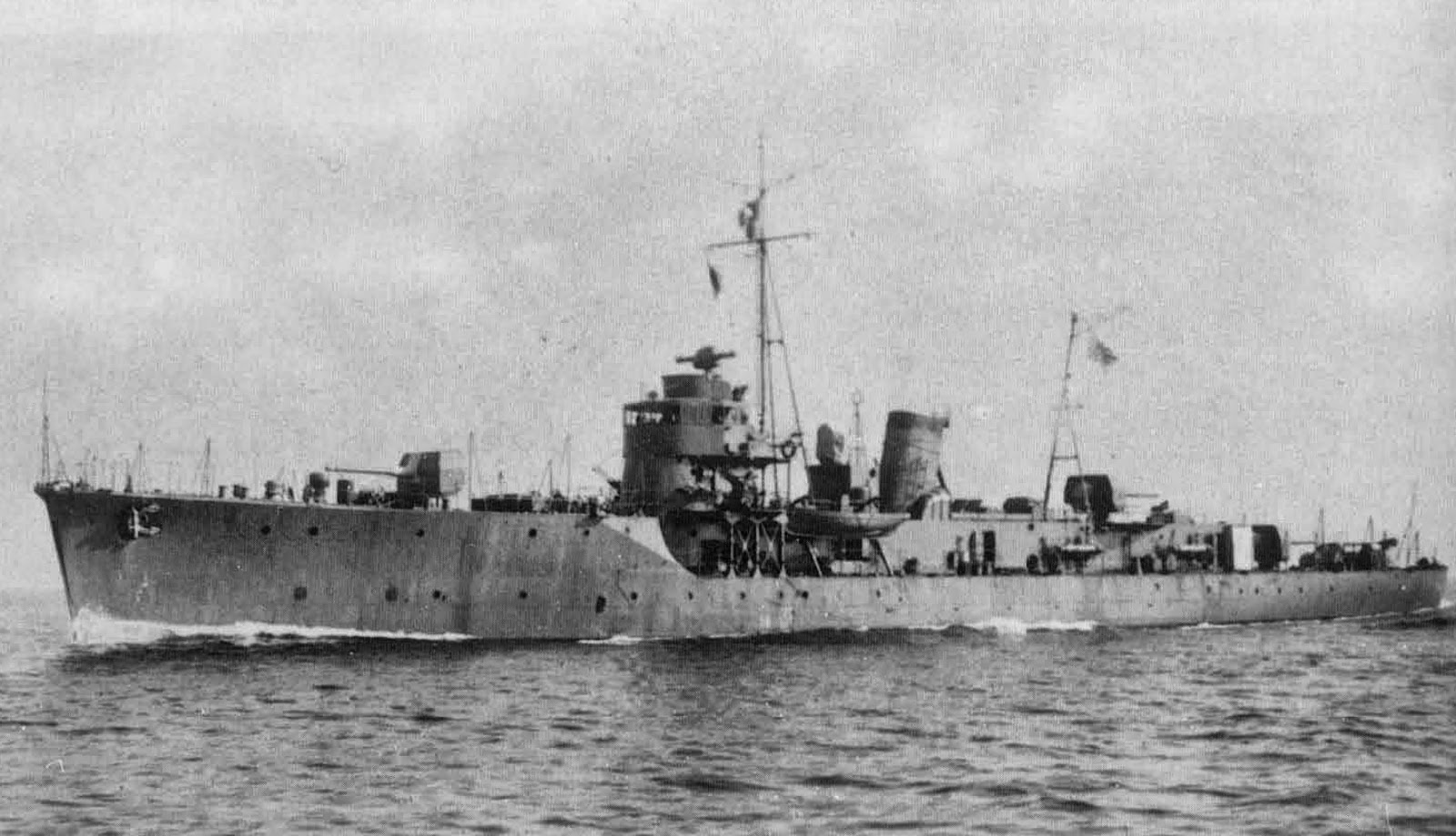
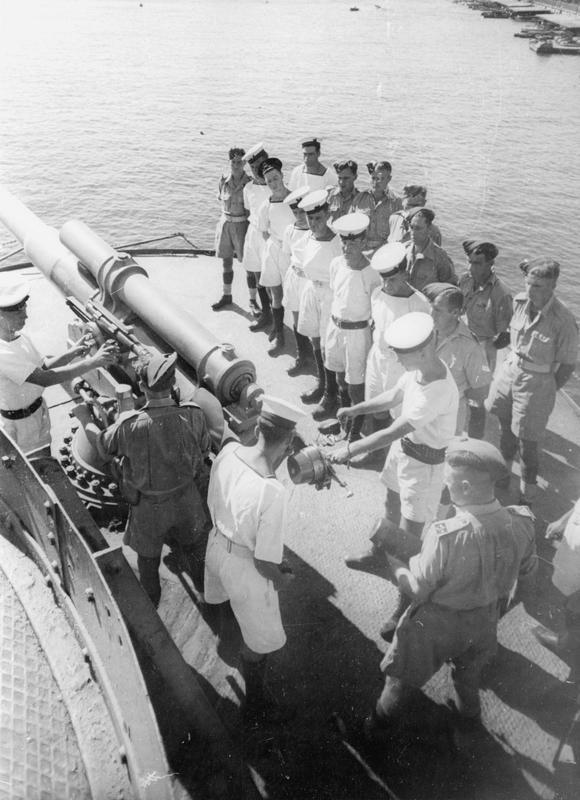
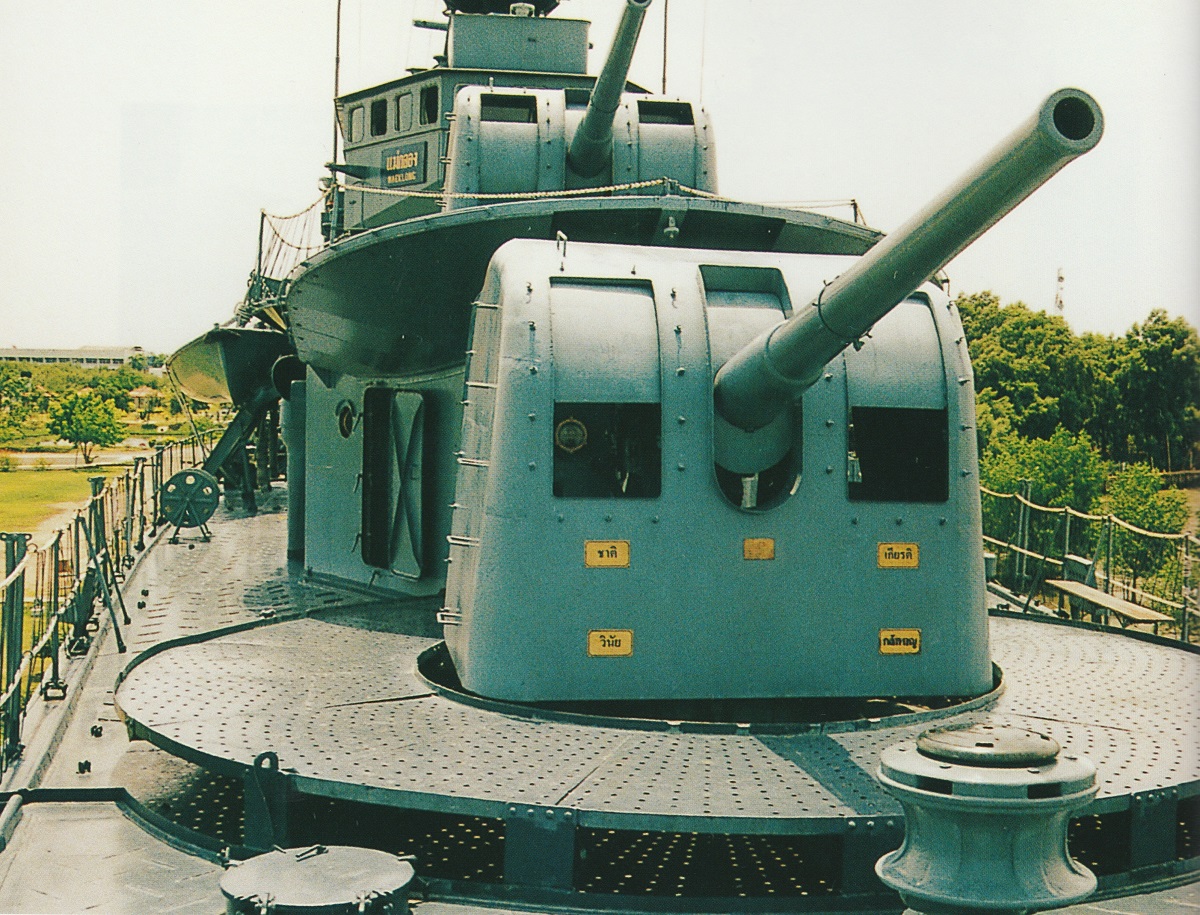

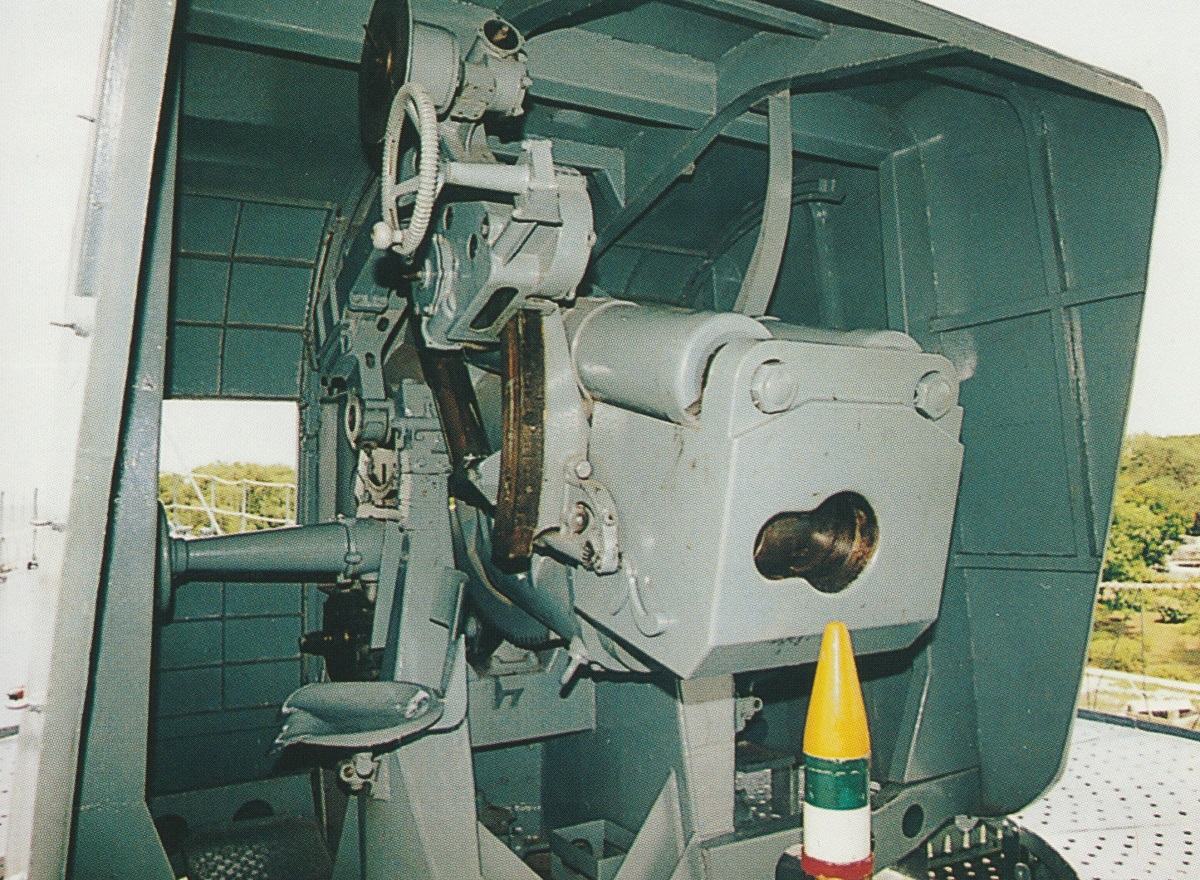
"Naval Weapons of World War Two" by John Campbell
"Japanese Kaibokan Escorts - Part 1" in "Warships Volume VIII" by Hans Legerer
"Japanese Kaibokan Escorts - Part 2" in "Warships Volume VIII" by Hans Legerer and Tomoko Rehm-Takahara
"Japanese Warships of World War II" by A.J. Watts
"Cruisers of World War Two" by M.J. Whitley
"All about Japanese Naval Shipboard Weapons" by Yamamoto Yoshihide and Yoshihara Ganya
---
US Naval Technical Mission to Japan report O-19: Japanese Projectiles General Types
US Naval Technical Mission to Japan report O-54(N): Japanese Naval Guns
---
Special help by Anthony Williams
22 November 2006 - Benchmark
27 May 2012 - Updated to latest template
14 July 2014 - Added information on Shumushu and Etorofu escort classes
24 August 2020 - Added Note on Sources, converted to HTML 5 format
18 May 2022 - Minor changes
23 September 2022 - Added photographs of IJN Uzuki and HTMS Maeklong, and added additional information on ammunition and gun construction
12 July 2023 - Minor changes to gun descriptions
03 May 2024 - Corrected typographical error
